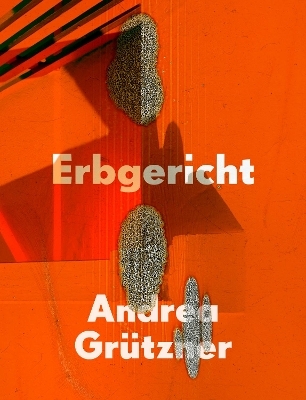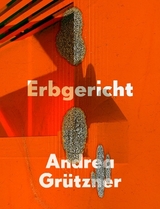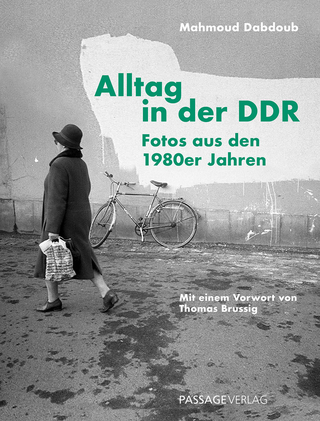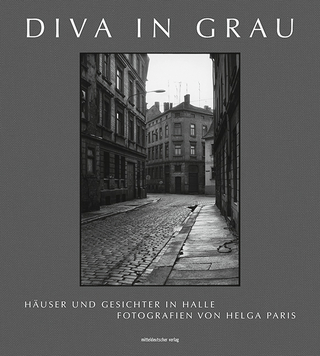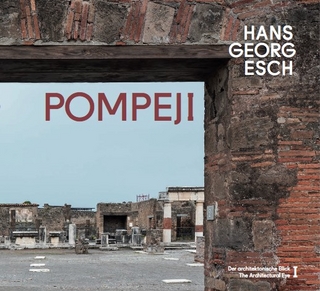Erbgericht
Seiten
2024
|
1. Auflage
Hartmann Projects Verlag
978-3-96070-113-2 (ISBN)
Hartmann Projects Verlag
978-3-96070-113-2 (ISBN)
Artist Andrea Grützner (*1984 in Pirna) has been working on her photographic series at the Erbgericht Polenz, a country inn in eastern Saxony, for a decade. The building has fascinated her since childhood, and its name refers to some regional cultural history concerning jurisdiction, which goes back to the Middle Ages. Its interior contains a historically evolved collage of materials and spaces that have been linked to the memories and emotions of the locals since its opening in 1898. Andrea Grützner doesn't primarily show the familiar, nostalgic scenes and stereotypes of the province, such as the tavern decorated with antlers. Instead, she elaborately stages the deserted, angled interior in front of her analog camera, sometimes using colored flash lighting. The result is an avant-garde labyrinth of intensely colorful and luminous shadow geometries that superimpose fragments of space and objects in a painterly manner, while their magical realism simultaneously refers to the subjectively and collectively colored spaces of memories as well as utopian visions of space.
The large, double-sided, abstract visual compositions, which are rotated ninety degrees in the book, create a playful, enigmatic sense of vertigo that gradually triggers a way to decipher things and perceive traces of use. The pull of this extraordinary pictorial cosmos is intensified by the implementation of the extended 7-color offset printing process and the tactile layering of different surfaces, reflecting the artist’s process.
Artist Andrea Grützner (*1984 in Pirna) has been working on her photographic series at the Erbgericht Polenz, a country inn in eastern Saxony, for a decade. The building has fascinated her since childhood, and its name refers to some regional cultural history concerning jurisdiction, which goes back to the Middle Ages. Its interior contains a historically evolved collage of materials and spaces that have been linked to the memories and emotions of the locals since its opening in 1898. Andrea Grützner doesn't primarily show the familiar, nostalgic scenes and stereotypes of the province, such as the tavern decorated with antlers. Instead, she elaborately stages the deserted, angled interior in front of her analog camera, sometimes using colored flash lighting. The result is an avant-garde labyrinth of intensely colorful and luminous shadow geometries that superimpose fragments of space and objects in a painterly manner, while their magical realism simultaneously refers to the subjectively and collectively colored spaces of memories as well as utopian visions of space.
The large, double-sided, abstract visual compositions, which are rotated ninety degrees in the book, create a playful, enigmatic sense of vertigo that gradually triggers a way to decipher things and perceive traces of use. The pull of this extraordinary pictorial cosmos is intensified by the implementation of the extended 7-color offset printing process and the tactile layering of different surfaces, reflecting the artist’s process.
The large, double-sided, abstract visual compositions, which are rotated ninety degrees in the book, create a playful, enigmatic sense of vertigo that gradually triggers a way to decipher things and perceive traces of use. The pull of this extraordinary pictorial cosmos is intensified by the implementation of the extended 7-color offset printing process and the tactile layering of different surfaces, reflecting the artist’s process.
Artist Andrea Grützner (*1984 in Pirna) has been working on her photographic series at the Erbgericht Polenz, a country inn in eastern Saxony, for a decade. The building has fascinated her since childhood, and its name refers to some regional cultural history concerning jurisdiction, which goes back to the Middle Ages. Its interior contains a historically evolved collage of materials and spaces that have been linked to the memories and emotions of the locals since its opening in 1898. Andrea Grützner doesn't primarily show the familiar, nostalgic scenes and stereotypes of the province, such as the tavern decorated with antlers. Instead, she elaborately stages the deserted, angled interior in front of her analog camera, sometimes using colored flash lighting. The result is an avant-garde labyrinth of intensely colorful and luminous shadow geometries that superimpose fragments of space and objects in a painterly manner, while their magical realism simultaneously refers to the subjectively and collectively colored spaces of memories as well as utopian visions of space.
The large, double-sided, abstract visual compositions, which are rotated ninety degrees in the book, create a playful, enigmatic sense of vertigo that gradually triggers a way to decipher things and perceive traces of use. The pull of this extraordinary pictorial cosmos is intensified by the implementation of the extended 7-color offset printing process and the tactile layering of different surfaces, reflecting the artist’s process.
| Erscheinungsdatum | 31.08.2024 |
|---|---|
| Co-Autor | Cora Waschke, Eric Meier |
| Verlagsort | Stuttgart |
| Sprache | englisch; deutsch |
| Maße | 227 x 298 mm |
| Themenwelt | Kunst / Musik / Theater ► Fotokunst |
| Schlagworte | Erinnerung • Magischer Realismus • Raumcollage • Schattengeometrie |
| ISBN-10 | 3-96070-113-6 / 3960701136 |
| ISBN-13 | 978-3-96070-113-2 / 9783960701132 |
| Zustand | Neuware |
| Informationen gemäß Produktsicherheitsverordnung (GPSR) | |
| Haben Sie eine Frage zum Produkt? |
Mehr entdecken
aus dem Bereich
aus dem Bereich
Fotos aus den 1980er Jahren von Mahmoud Dabdoub
Buch | Hardcover (2024)
Passage-Verlag
24,50 €
der architektonische Blick : the architectural eye
Buch | Hardcover (2024)
König, Walther (Verlag)
38,00 €
